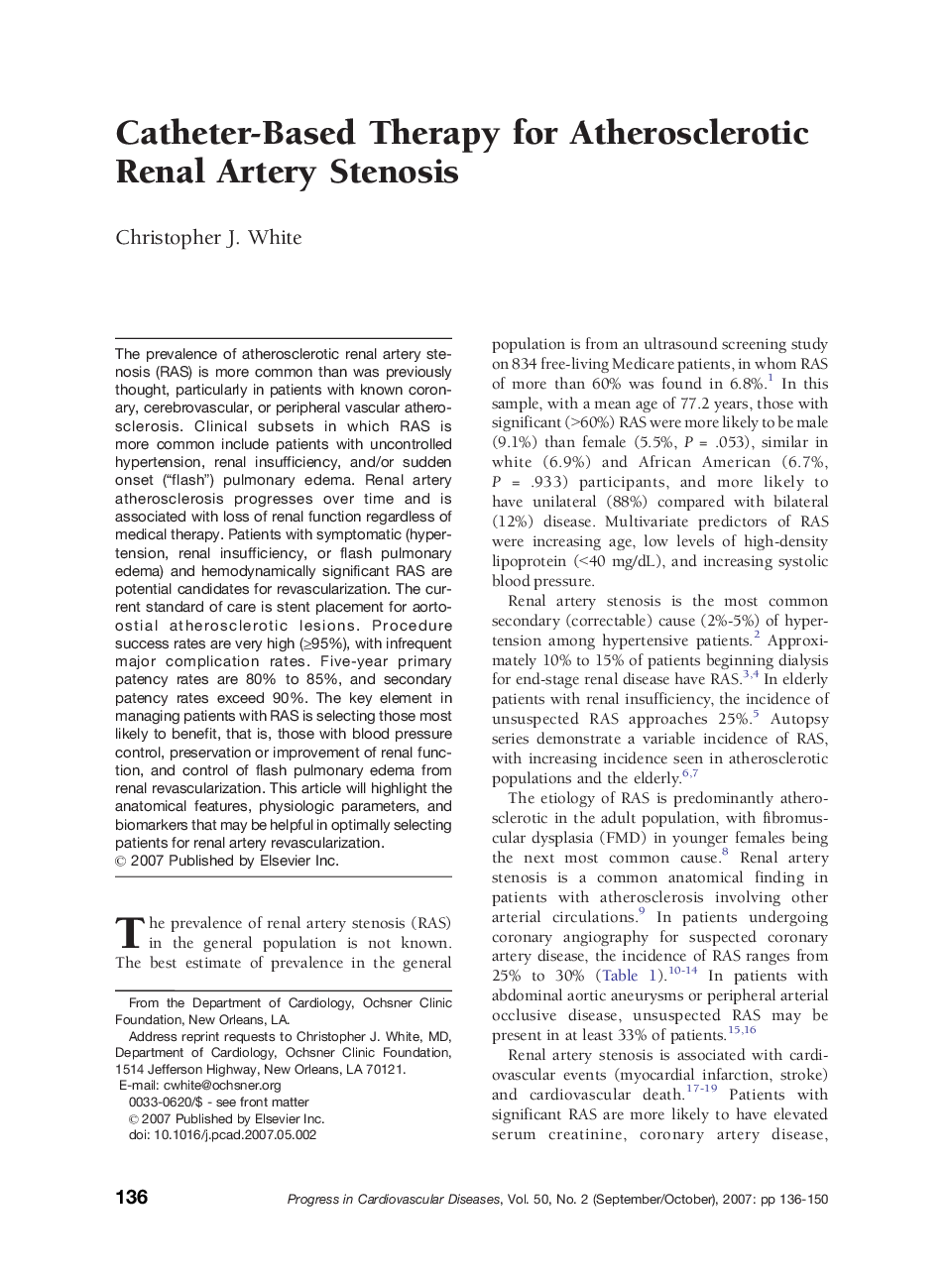| Article ID | Journal | Published Year | Pages | File Type |
|---|---|---|---|---|
| 3006714 | Progress in Cardiovascular Diseases | 2007 | 15 Pages |
The prevalence of atherosclerotic renal artery stenosis (RAS) is more common than was previously thought, particularly in patients with known coronary, cerebrovascular, or peripheral vascular atherosclerosis. Clinical subsets in which RAS is more common include patients with uncontrolled hypertension, renal insufficiency, and/or sudden onset (“flash”) pulmonary edema. Renal artery atherosclerosis progresses over time and is associated with loss of renal function regardless of medical therapy. Patients with symptomatic (hypertension, renal insufficiency, or flash pulmonary edema) and hemodynamically significant RAS are potential candidates for revascularization. The current standard of care is stent placement for aorto-ostial atherosclerotic lesions. Procedure success rates are very high (≥95%), with infrequent major complication rates. Five-year primary patency rates are 80% to 85%, and secondary patency rates exceed 90%. The key element in managing patients with RAS is selecting those most likely to benefit, that is, those with blood pressure control, preservation or improvement of renal function, and control of flash pulmonary edema from renal revascularization. This article will highlight the anatomical features, physiologic parameters, and biomarkers that may be helpful in optimally selecting patients for renal artery revascularization.
